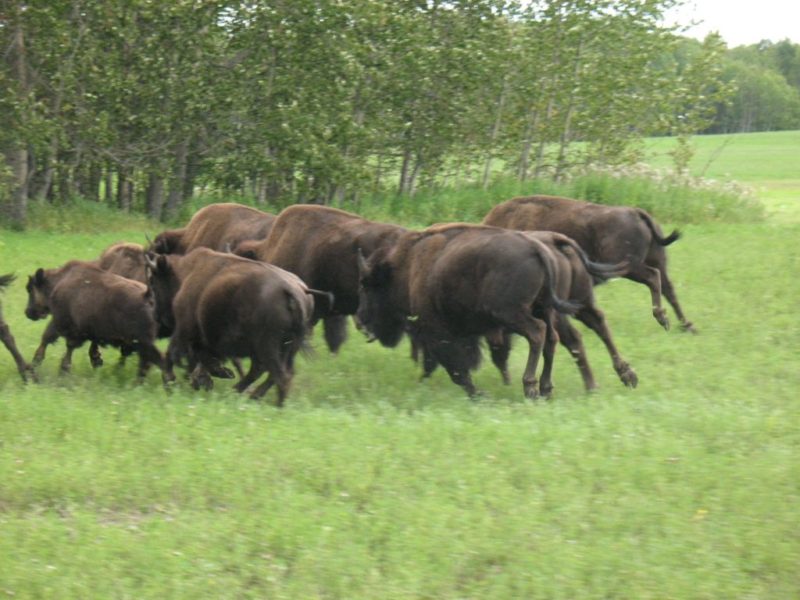Sturgeon River Plains Bison
In 1969, approximately 50 bison from Elk Island National Park were released in the Thunder Hills, north of Prince Albert National Park, by the provincial government. The newly released bison dispersed and a small number of them relocated into the south west corner of Prince Albert National Park to establish today’s Sturgeon River population. The population grew steadily, and in 2006 reached 400 animals.
-
The Threat
Today, herd numbers are estimated to be around 100 animals. An anthrax outbreak in 2008 reduced the population by 20-25% and the numbers continue to decline due to disease, wolf predation, and harvesting by humans when bison leave the park.
-
What CPAWS is Doing
CPAWS SK has been actively campaigning to see Plains bison listed as Threatened under the Federal Species at Risk Act (SARA). The Committee on the Status of Endangered Wildlife in Canada (COSEWIC – the scientific body that assesses and recommends listings for SARA) has been recommending this listing since 2004, reconfirming this recommendation again in 2013.
CPAWS SK has also been involved in the Buffalo Treaty. While largely an idea born out of the goals of the Blackfoot people to establish new bison populations in southern Alberta and northern Montana, this Nation-to-Nation treaty provides an opportunity for First Nations across North America’s historic bison range to take leadership in bison conservation and rebuild traditional relationships. First Nations associated with the Sturgeon River herd have decided to sign the Treaty this fall, and have great hope that this can help support a collaborative effort to save the Sturgeon River bison herd. Through CPAWS’ involvement with the Treaty, we have been working with the First Nations elders and leaders, many of which are also very concerned about the effect of the bison harvest on the Sturgeon River population, and to address how to reconcile bison survival with traditional hunting practices of First Nations people in Saskatchewan.
-
Resources

